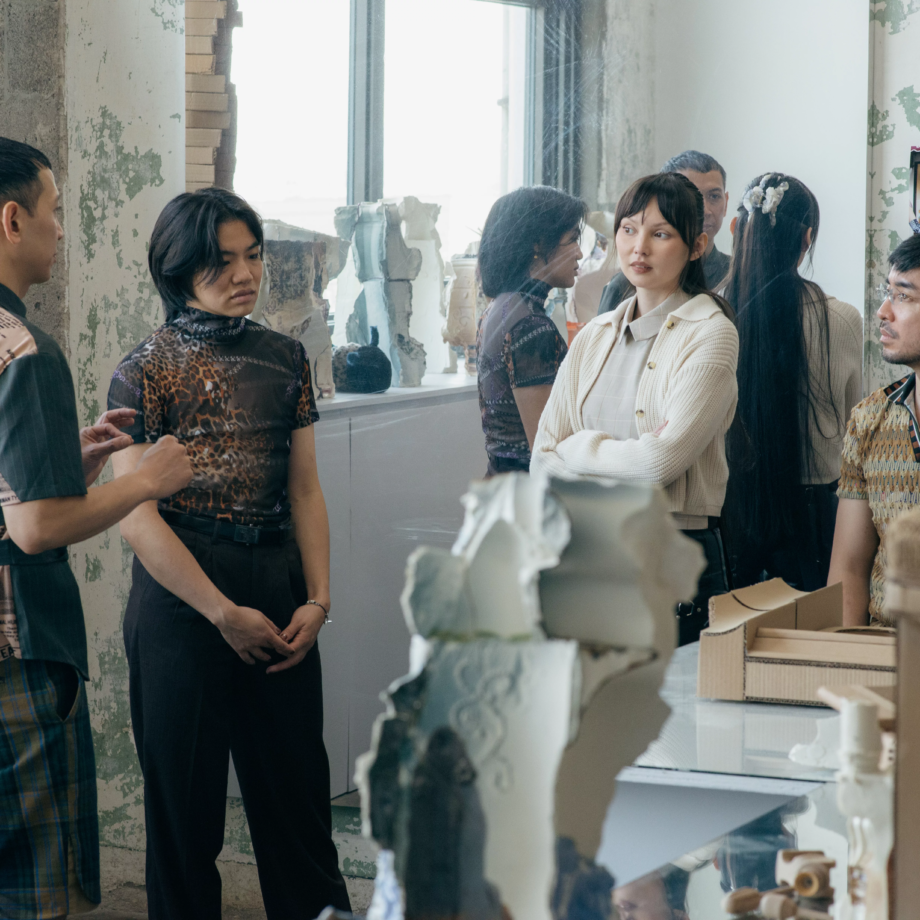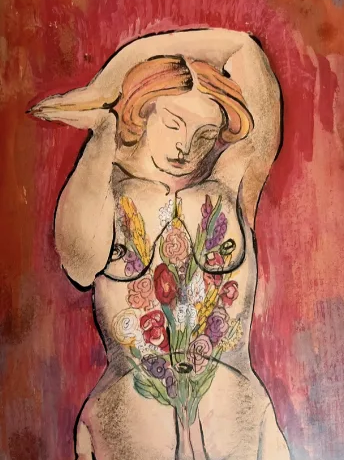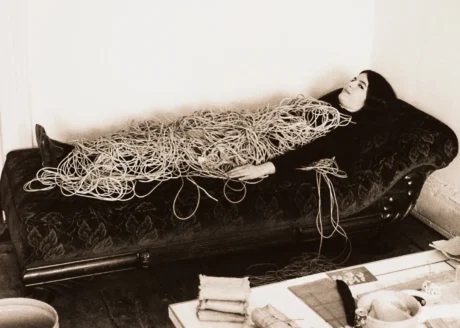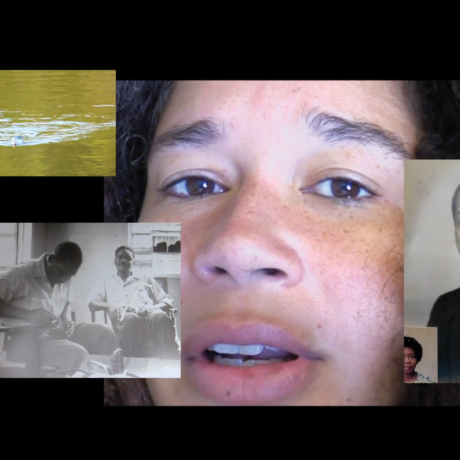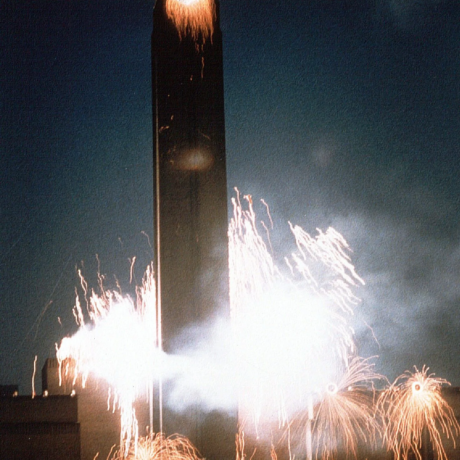This weekend, Refashioning, an exhibit that first came to life at New York City’s Japan Society in 2022, lands in Los Angeles via the Hammer Museum. Ahead of its opening Maria Vogel visits CFGNY in their Brooklyn Studio.
For CFGNY, “Concept Foreign Garments New York” is only one of many monikers their acronym stands for. And, although it’s the one that has been most widely publicized, it’s not entirely telling of the four-person collective’s scope. In particular, the word “garments” could be a cause for mislead. Indeed, garments are a medium the collective has made use of, but is just one in their much broader wheelhouse.
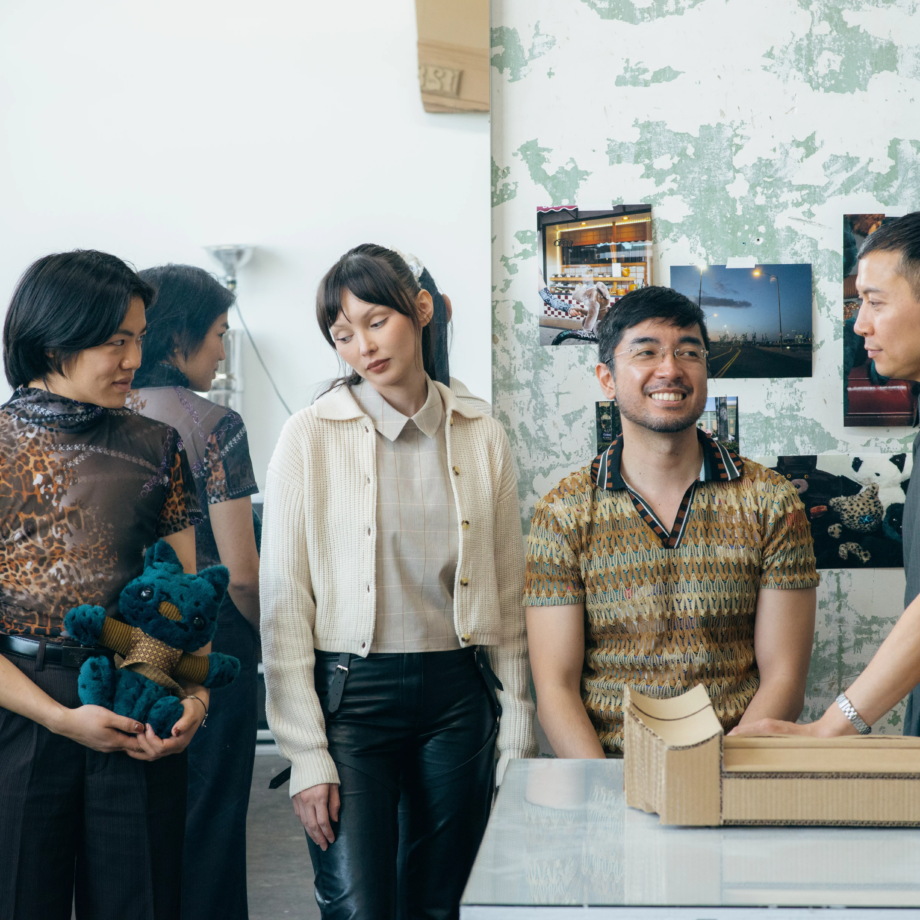
I meet the friends and collaborators in their Bushwick studio space, which feels more like a lab where the ideas running through each member’s minds are expelled and tested each day. The names and faces behind CFGNY belong to Daniel Chew, Tin Nguyen, Kirsten “Kiki” Kilponen and Ten Izu. Their energy is contagious. The excitement in their eyes as they talk about their journeys through the past years, the journeys that have brought them to this point here, standing in their studio, is palpable It’s immediately clear to me that, individually, each artist holds their own and could find success and attract intrigue as solo acts. As a whole, however, their effect is tenfold.
Although fashion might have been the medium with which CFGNY’s fandom was sparked, for the four artists, it’s always been about much more than a singular industry. What better exhibition venue to aid in this recontextualization than a world-renowned museum? This weekend, Refashioning, an exhibit that first came to life at New York City’s Japan Society in 2022, lands in Los Angeles via the Hammer Museum.
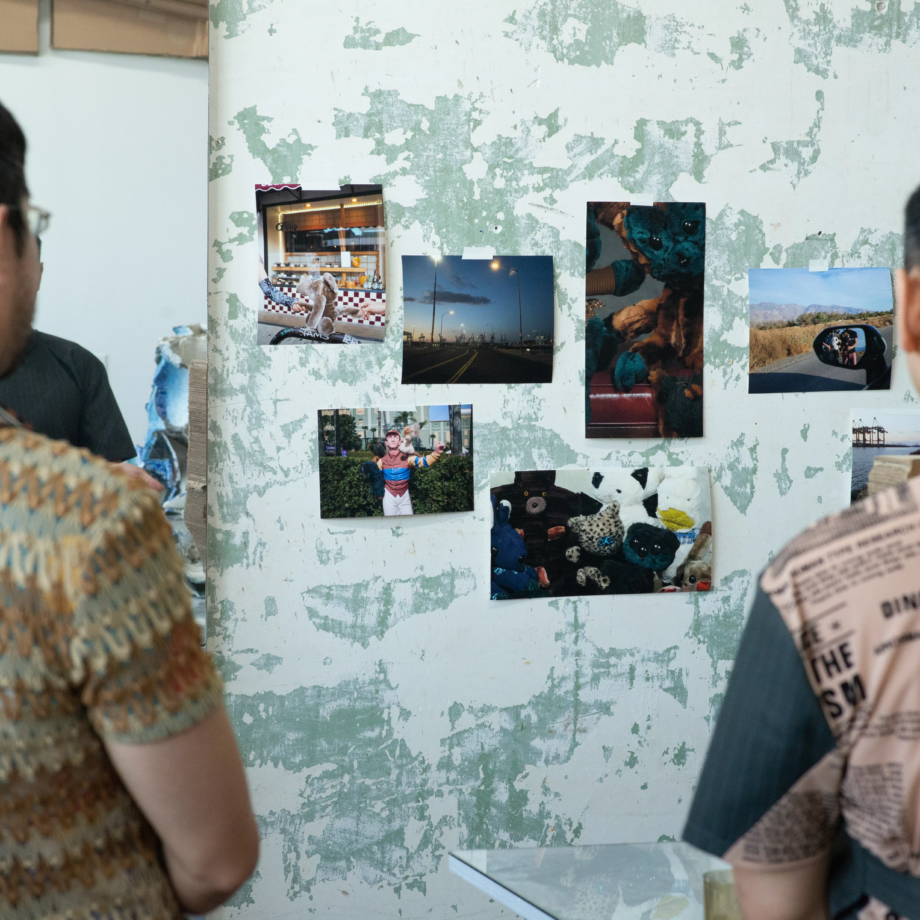
Collectively, all of CFGNY’s work has established an ongoing dialogue that addresses historically rooted (and still relevant) socio-political themes in Asia, specifically ones regarding the intersection of race and production. When considering how to expand upon Refashioning and the existing body of work that will travel to the Hammer, the group didn’t have to look far beyond the museum’s walls for the histories they wished to shed new light upon. Using their previous research, of and for the Japan Society, CFGNY realised the stark dichotomy between early 20th century New York—a time when Japanese culture was being commoditised by the elite class, emulated even—and the West Coast, where it was being lived under threatening circumstances.
With this locale as their backdrop to explore the make-up of life for Japanese immigrants, CFGNY knew they wanted to use the opportunity to uncover tales of the everyday as opposed to the stories in history books. “As a narrative, we want to work against the idea of exceptionalism,” Ten shared. “What about the people who weren’t US citizens or didn’t serve in the military—we wanted to look at everyday people who weren’t exceptions.”
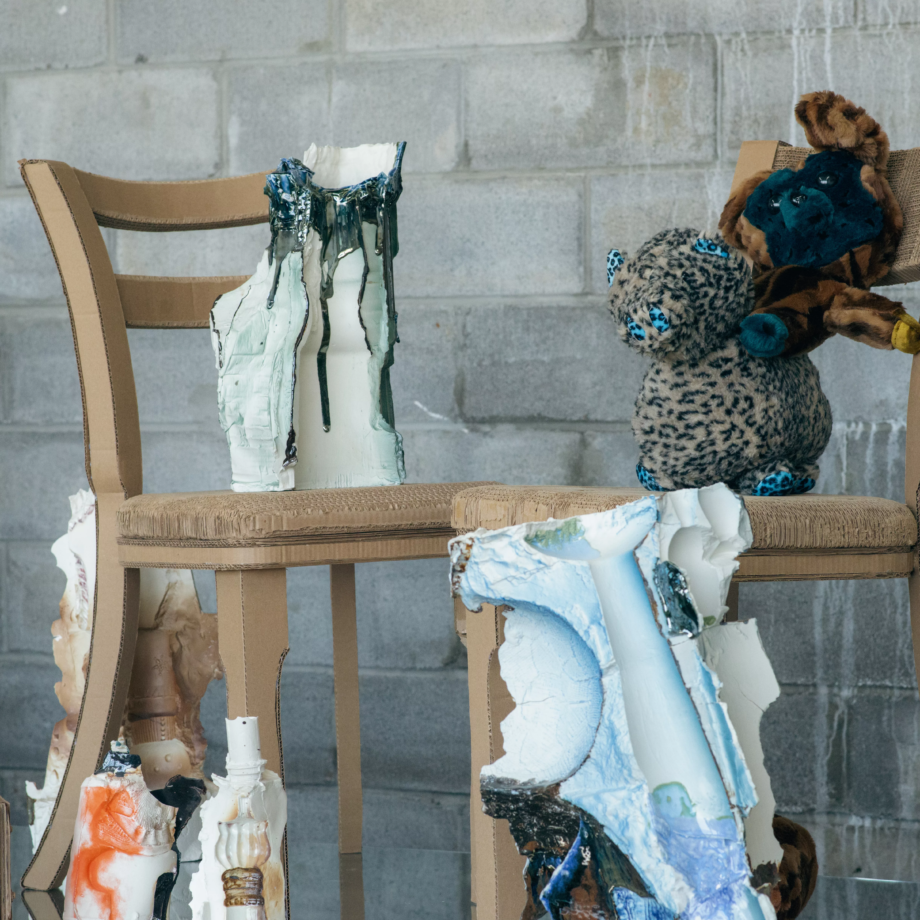
Research and accompanying works reflect the accounts of specifically chosen sites—Santa Anita Park, a racetrack that was once the site of a temporary detention facility (where Ten’s grandmother spent time when she was young), Terminal Island (a former Japanese fishing village whose residents were evicted following the issue of Executive Order 9066), and the now-closed, five-decade old Little Tokyo establishment Suehiro Café, to name a few—and those who inhabited each.
Keenly aware of the impossibility for an entire story to be properly translated as time passes, Tin remarks, “We’re interested in finding nuance and exploring what that means.” Refashioning does just this, each site-specific intervention as illuminating as the next.
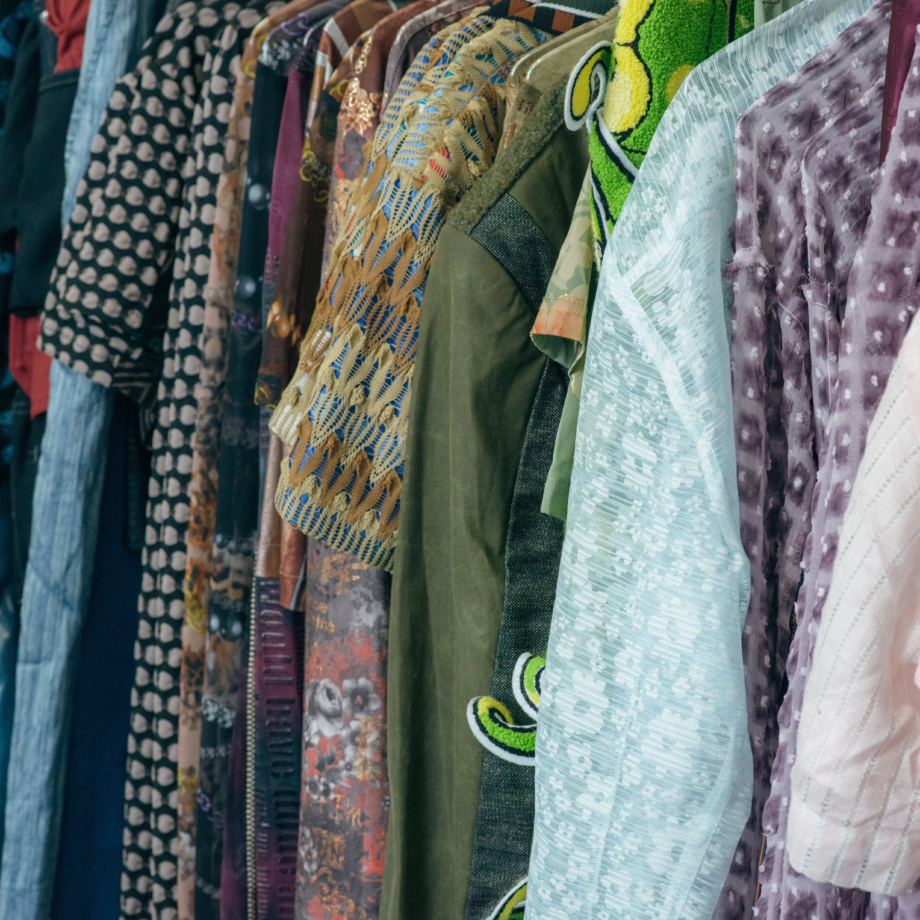
This is just the beginning for CFGNY, whose explorations feel as boundless as they do important. The collective’s approach and thought process rings invigorating in an art world overdue for new horizons, new attitudes toward the construct of an art practice. Following their show with the Hammer Museum, CFGNY will take part in another milestone—the Smithsonian Design Triennial this fall at the Cooper Hewitt.
